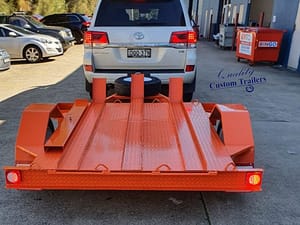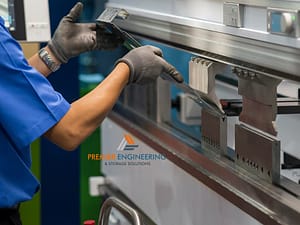When it comes to maintaining and repairing your home’s roof, a one-size-fits-all approach simply doesn’t cut it. Different types of homes, whether single-family, multi-family, or historic, each have unique roofing needs. Tailored roofing services are essential to address these specific requirements, ensuring the longevity and functionality of your roof.
The Importance of Tailored Roofing Services for Various Home Types
Proper roofing services encompass more than just repairs; they include selecting the right materials, performing regular maintenance, and applying modern techniques that respect the home’s architecture. By choosing the right roofing services, homeowners can protect their investment, enhance curb appeal, and ensure a safe living environment.
Roofing for Single-Family Homes
Common Roofing Materials and Styles for Single-Family Homes
Single-family homes often feature a variety of roofing materials and styles, each with its own set of benefits and considerations:
- Asphalt Shingles: The most popular choice due to their affordability and durability. Asphalt shingles come in a wide range of colors and styles, making them versatile for different home designs.
- Metal Roofing: Known for its longevity and energy efficiency, metal roofing is becoming increasingly popular. It is resistant to extreme weather conditions and can last up to 50 years with proper maintenance.
- Tile Roofing: Often found in Mediterranean or Spanish-style homes, tile roofing is both durable and aesthetically pleasing. It is resistant to fire and can withstand harsh weather conditions.
- Slate Roofing: A premium roofing material known for its beauty and longevity. Slate roofs can last over 100 years but require a robust structural support system due to their weight.
Importance of Regular Maintenance and Roof Leak Repair
Regular maintenance is crucial for the health of your roof. It helps in identifying and addressing minor issues before they escalate into major problems. Here are some key maintenance tasks:
- Inspections: Regular roof inspections, especially after severe weather, can help identify potential problems such as loose or missing shingles, rust spots on metal roofs, or cracked tiles.
- Cleaning: Keeping the roof free of debris, moss, and algae helps prevent damage. Clean gutters and downspouts to ensure proper drainage and avoid water backup.
- Roof Leak Repair: Promptly addressing roof leaks is vital to prevent water damage. Look for signs of leaks such as water stains on ceilings or walls, damp insulation, or mold growth. Contact a professional roofing service immediately if a leak is suspected.
Multi-Family Residential Roofing Needs
Unique Challenges in Roofing for Multi-Family Units
Roofing for multi-family units, such as apartment complexes and townhouses, presents unique challenges:
- Scale and Complexity: Multi-family buildings often have larger and more complex roof structures compared to single-family homes. This complexity requires specialized expertise and equipment.
- Coordination: Coordinating roofing projects in multi-family buildings can be challenging due to the need to minimize disruption for multiple residents. Effective communication and planning are essential.
- Diverse Needs: Different units within the same building may have varying roofing needs. Custom solutions are required to address specific issues while maintaining the overall integrity of the roof.
Effective Roofing Solutions for Apartment Complexes and Townhouses
To address these challenges, effective roofing solutions for multi-family units include:
- Durable Materials: Using high-quality, durable materials that can withstand heavy use and extreme weather conditions is crucial. Options such as metal roofing or high-grade asphalt shingles are often recommended.
- Regular Maintenance: Implementing a comprehensive maintenance plan that includes regular inspections, cleaning, and minor repairs helps prevent major issues. Scheduled maintenance also ensures that the roof remains in good condition over the long term.
- Professional Services: Hiring experienced roofing services that specialize in multi-family residential roofing is essential. These professionals have the expertise to manage large-scale projects and address the unique challenges associated with multi-family units.
Special Considerations for Historic Homes
Preservation and Restoration of Historic Roofing
Historic homes require special attention when it comes to roofing to preserve their architectural integrity and historical value:
- Authentic Materials: Using materials that match the original roofing as closely as possible is important for maintaining the home’s historical accuracy. This may include slate, wooden shingles, or clay tiles.
- Traditional Techniques: Employing traditional roofing techniques that were used during the home’s construction period ensures that the restoration is authentic. Skilled craftsmen who are familiar with these methods should be employed.
Modern Techniques That Respect Historical Integrity
While preserving the historical aspects of a roof, it is also possible to incorporate modern techniques to enhance durability and performance:
- Underlayment and Insulation: Modern underlayment materials and insulation can be used to improve the roof’s performance without altering its appearance. These additions provide better protection against water infiltration and improve energy efficiency.
- Discreet Upgrades: Technologies such as hidden gutter systems, improved flashing, and modern fasteners can be incorporated in a way that maintains the roof’s historical look while providing modern benefits.
Eco-Friendly Roofing Options
Benefits of Green Roofing Solutions
Green roofing solutions offer numerous benefits for both homeowners and the environment:
- Energy Efficiency: Eco-friendly roofs can significantly reduce energy costs by providing better insulation and reflecting more sunlight, which helps maintain a stable indoor temperature.
- Environmental Impact: Using sustainable materials reduces the carbon footprint of your home. Many eco-friendly roofing options are made from recycled materials and are themselves recyclable.
- Longevity and Durability: Green roofs are often more durable and have a longer lifespan than traditional roofing materials, reducing the need for frequent replacements.
- Aesthetic Appeal: Eco-friendly roofs can enhance the aesthetic appeal of your home, making it more attractive to potential buyers and increasing its market value.
Types of Eco-Friendly Roofing Materials
There are several types of eco-friendly roofing materials to consider:
- Cool Roofs: These roofs are designed to reflect more sunlight and absorb less heat. They are typically made from highly reflective materials like white or light-colored coatings, tiles, or membranes.
- Metal Roofing: Metal roofs are highly durable, recyclable, and can be made from recycled materials. They reflect solar heat effectively, reducing cooling costs.
- Green Roofs: Also known as living roofs, these involve growing vegetation on the roof surface. Green roofs provide natural insulation, absorb rainwater, and reduce the urban heat island effect.
- Recycled Shingles: Made from recycled materials such as rubber, plastic, or wood, these shingles are an eco-friendly alternative to traditional asphalt shingles.
- Solar Tiles: Integrated with solar panels, these tiles not only provide roofing but also generate renewable energy, helping to offset electricity costs.
Importance of Regular Roof Inspections
Preventing Major Issues with Regular Check-Ups
Regular roof inspections are crucial for maintaining the health of your roof and preventing major issues:
- Early Detection: Routine inspections help identify potential problems before they escalate, such as small leaks, damaged shingles, or wear and tear.
- Cost Savings: Addressing minor issues early can save significant money by avoiding costly repairs or full roof replacements.
- Safety: Regular inspections ensure that your roof remains structurally sound and safe, preventing accidents or injuries caused by a weakened roof.
- Insurance Compliance: Many insurance policies require regular roof inspections to remain valid. Keeping up with inspections ensures you comply with these requirements.
How Often to Schedule Roof Inspections
The frequency of roof inspections depends on several factors, including the age of your roof, local climate, and recent weather events:
- Annual Inspections: A general guideline is to have your roof inspected at least once a year. This helps catch any developing issues and maintain the overall health of your roof.
- After Severe Weather: Following major storms, high winds, or heavy snowfall, it’s essential to inspect your roof for any damage caused by these events.
- Older Roofs: If your roof is over 10 years old, consider scheduling inspections more frequently, such as twice a year, to ensure it remains in good condition.
- Signs of Damage: If you notice any signs of damage, such as leaks, missing shingles, or sagging, schedule an inspection immediately to assess and address the problem.
Handling Roof Leak Repairs Efficiently
Identifying Signs of Roof Leaks Early
Early identification of roof leaks repair is crucial for minimizing damage and repair costs:
- Water Stains: Look for discolored spots on your ceilings or walls, which often indicate water intrusion from a roof leak.
- Damp or Musty Odors: Persistent damp smells can be a sign of mold or mildew growth caused by a leak.
- Drips and Puddles: Obvious signs of water dripping or pooling in your attic or on your ceiling are clear indicators of a leak.
- Missing or Damaged Shingles: Visually inspect your roof for missing, cracked, or curling shingles, which can allow water to penetrate your roof.
Steps to Take When a Roof Leak is Discovered
When you discover a roof leak, it’s important to take immediate action to minimize damage:
- Contain the Leak: Use buckets or other containers to catch dripping water and prevent it from spreading further into your home.
- Move Valuables: Protect your belongings by moving them away from the leak area to prevent water damage.
- Temporary Patch: Apply a temporary patch to the leak area using roofing tape or tarps to minimize further water intrusion until professional help arrives.
- Document the Damage: Take photos of the leak and any damage it has caused. This documentation can be useful for insurance claims.
- Contact a Professional: Reach out to a reputable roofing service for a thorough inspection and permanent repair. Avoid attempting major repairs yourself, as this can be dangerous and may void warranties.









